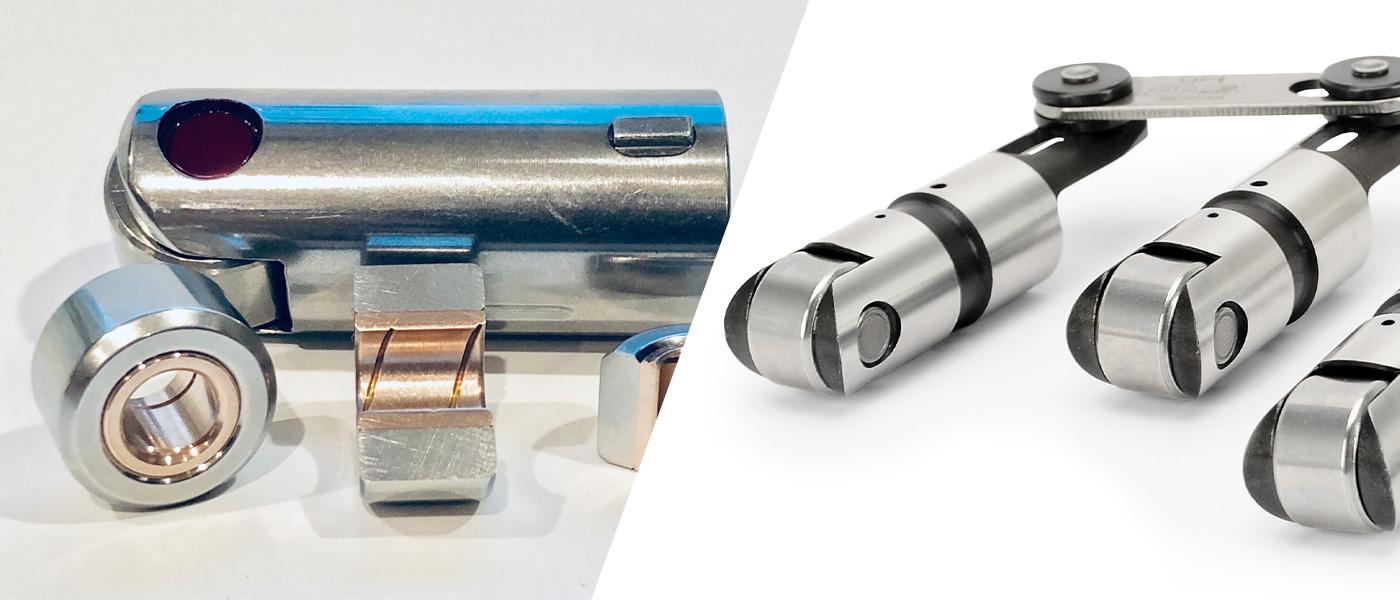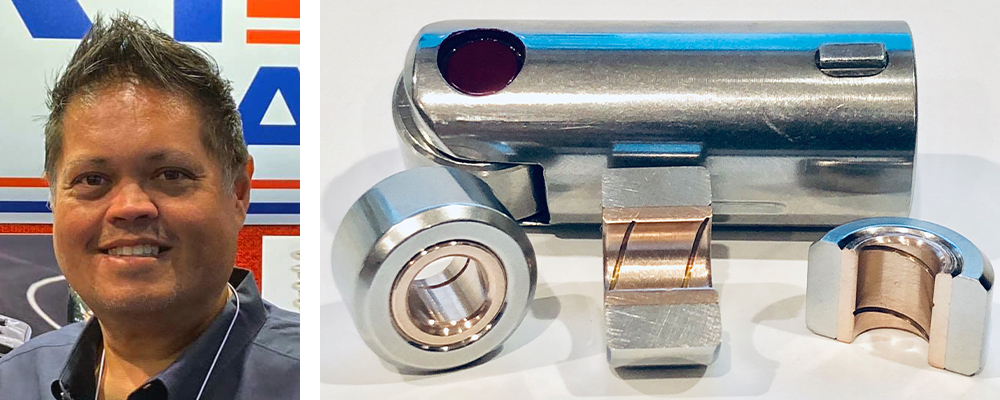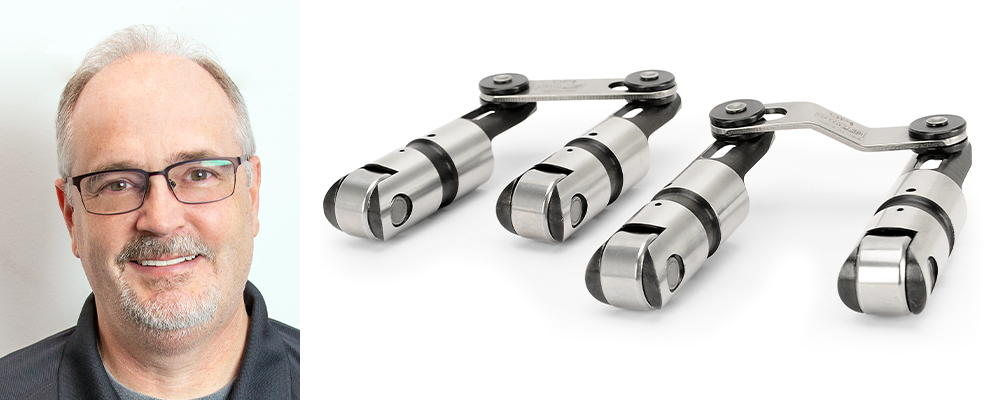Make The Case: Bushed Lifters vs. Needle-Bearing Lifters

MAKE THE CASE: BUSHED LIFTERS VS. NEEDLE-BEARING LIFTERS
EVEN THOUGH BOTH STYLES HAVE BEEN AROUND FOR SOME TIME, THE DEBATE OVER THESE TWO LIFTER DESIGNS REMAINS A HOT-BUTTON TOPIC IN MOTORSPORTS TODAY. WHILE MANY RACERS ALREADY HAVE THEIR MINDS MADE UP, OUR ADVOCATES NOTE THAT WHAT MAKES ONE OPTION SUPERIOR TO THE OTHER OFTEN COMES DOWN TO THE DEMANDS OF THE APPLICATION.
BUSHED LIFTERS ADVOCATE:
NOLAN JAMORA,
ISKY RACING CAMS
–
A little more than a decade ago, we bought one of the first Spintrons off the line. We wanted to create a new line of oval track valve springs. As we were developing these springs and they got to a point where they could handle the rpm and the pressures, we started breaking our lifters. The needles would fail and go all throughout the motor. We’d have to pick them out, rebuild the engine, and keep testing. Eventually we decided that there was probably a better way to do this, and that’s when we started looking at a bushing lifter.
We knew that we would need a material that would be porous enough to pull the oil in, but it also needed to keep the oil in it. Figuring out the right mix of materials took us about two years of testing, but what we ended up with was something that would allow us to keep running the Spintron 24 hours a day, seven days a week without having to do rebuilds.
Whether we’re talking about street use or a hardcore racing application, the average bushed lifter lasts three to four times longer than a needle-bearing lifter would in the same use case. The other huge benefit is if there is a catastrophic valve spring failure, valve tip or stem break, or an oil system failure, a bushed lifter will never break apart and spread needles throughout the engine. It will keep the damage localized to the valvetrain and camshaft rather than spreading to the crank, rod, and piston areas.

Another key difference with bushed lifters is that you don’t see distortion of the bushing as it goes up the main acceleration ramp in the way that you do with needle-bearing lifters under high spring load, high rpm, and higher pressures. This distortion causes variations in the translation between the designed cam motion and the actual valve motion, and that leads to a loss of horsepower. Since the bushing follows that designed cam motion and it is fully translated to valve motion, you don’t lose that horsepower with a bushed lifter.
Another great thing about our bushed lifters is that you really don’t have to make any special considerations for them. These will drop right into an existing combination. If you’re running a solid-lifter roller now, you don’t have to make changes to the oiling system, the oil you use, or the spring pressures. With our bushing material you can run a restrictor, or run it on the street, or run it on high heat—you don’t have to worry about any of that. That’s one of the reasons it’s been so successful at events like Drag Week.
NEEDLE-BEARING LIFTERS ADVOCATE:
BILLY GODBOLD,
COMP CAMS
–
There are people who believe, almost at a religious level, that bushings are inherently better. They’re not. On the other hand, there are those who feel the same way about needle-bearings, and that’s not the case either. It really depends on what you’re doing and what the application requires.
Teams in IMSA or FIA GTLM-class racing are all using needle-bearing roller lifters. When everything’s properly controlled, needle-bearing lifters are just better. They’re lower friction, the cam lasts longer, and the needle bearings last longer.
The camshaft and lifter wheel will last three to four times longer with a good needle-bearing than it will with a bushed lifter. A bushing bearing is designed sort of like a drum brake: As the cam comes off the closing ramp onto the base circle and the valve is closed, there’s no spring force going to the rocker arm, the pushrod, and the lifter. The lifter is just floating there, so it will hydroplane on the oil that’s on the camshaft. As the wheel is hydroplaning, it is also slowing down.
If you’ve ever watched big planes land on an air strip, you’ve probably noticed that as soon as the landing gear touches down, there’s a big puff of white smoke. Basically the same thing happens on the opening ramp of a camshaft in an endurance application that runs bushed lifters. Every time it comes around, it will “skid” as it comes back up to speed.

With a needle-bearing lifter, there is much less surface area making contact, and as a result, the amount of friction being created is dramatically lower. That means that the inertia of the wheel doesn’t have time to appreciably change its rotating speed, so you don’t see that smearing of metal as it hits the opening ramp on the other side.
With a bushed lifter setup, you also have to be careful with the type of motor oil you’re using. Because there’s no true pressurized oil between the axle and the bushing as in the cam bearing, you don’t have this hydrodynamic wedge all the time. Without that wedge, the oil chemistry becomes much more important. You need extremely low friction in that sliding area, and you need oil that will get in there and stay there.
Needle-bearings, on the other hand, require very little oil. That’s why there are a lot of needle-bearings in Pro Stock motors and builds like that. They don’t want the oil dripping down the camshaft onto the crankshaft, so a lot of folks will go with needle-bearings just to get away from windage issues.
Even though they run cam tunnels, all the NASCAR teams are still using needle-bearings for the camshaft as well. Since they’re limited to a 60-mm camshaft, these teams run needle-bearings to reduce the amount of oil that needs to be directed to that part of the engine. They know that will allow them to make both the pressure stage and the scavenging stage of the oil system smaller. They’re very conscious of how much power the oiling system takes, and they don’t want to give up a horsepower’s worth of oil to pump it in there and then pump it back to run the babbitt bearing on the camshaft.
At the end of the day, if you know your valvetrain is under control, you want to run a needle-bearing. But if you’re not sure, a bushed lifter can provide some insurance by spreading the load out.
